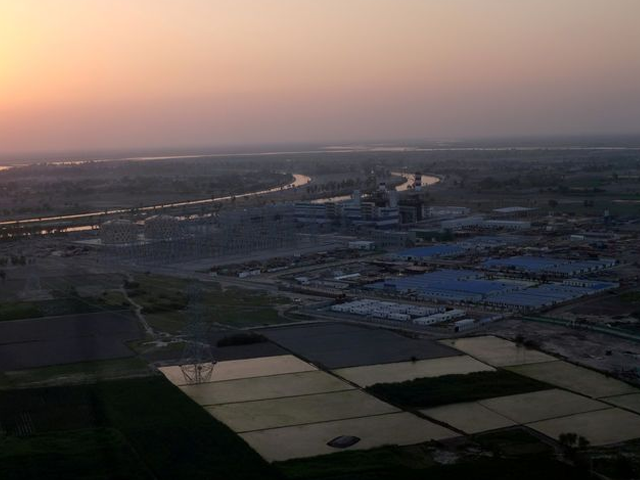Wrongdoing feared: Senate panel seeks details of Qatar LNG contract
Asks why other countries were ignored; former PML-N govt may land in trouble

An aerial view of the Haveli Bahadur Shah LNG power plant in Jhang.
Photo: AFP
The PML-N administration is also facing allegations of wrongdoing in the award of an LNG terminal contract, which has prompted the National Accountability Bureau (NAB) to initiate investigation.
The Senate Standing Committee on Petroleum on Thursday sought details from the Ministry of Energy (Petroleum Division) of a $15-billion long-term LNG contract with Qatar signed on February 10, 2016.
Neelum-Jhelum power project is a symbol of Pak-China friendship: PM Abbasi
Senator Mohsin Aziz chaired the parliamentary body meeting. The committee directed relevant ministries to brief it in the next huddle on the LNG agreement between governments of Pakistan and Qatar.
It also sought details why Pakistan struck the agreement with only Qatar while options for entering into deals with other LNG producers were available.
The committee was informed that more than Rs35 billion had been collected from consumers in capacity charges for the LNG terminal since 2015. Its members voiced concern over the payment of such a hefty amount.
Officials of the Petroleum Division informed the committee that Pakistan had spent $3.8 billion on the import of 161 cargoes of LNG. The LNG price set under the agreement with Qatar was 13.37% of Brent crude oil price.
Officials of the Ministry of Energy (Petroleum Division) pointed out that electricity was produced from various sources including gas that contributed 38% to the energy mix, furnace oil 34%, wind 10%, coal 8%, LNG 6% and liquefied petroleum gas (LPG) 1%.
For the discovery of oil and gas, hundreds of thousands of square kilometres have been surveyed, 1,055 oil and gas wells have been dug and 1,386 wells are at development stage. The success level is 34%.
So far, 174 licences have been issued to oil and gas exploration companies and 180 leases have been given to exploration and production companies.
Around 57 trillion cubic feet of gas has been discovered. Of that, 36 trillion cubic feet have been extracted and included in the system. The remaining 21 trillion cubic feet will be exhausted in 13 years.
Oil deposits stand at 1,197 million barrels, of which 865 million barrels have been consumed. The remaining 332 million barrels are available for future consumption that will last 10 years based on present demand levels.
Taking external help 50MW power plant for K-IV approved
Pakistan consumed 26.4 million tons of petroleum products in 2016-17. Domestic oil production meets just 15% of the requirement.
The committee was informed that the energy ministry had a non-development budget of Rs187 million whereas its development expenditure was estimated at Rs179 million.
The federal government collected Rs167.45 billion in petroleum levy during fiscal year 2016-17.
Published in The Express Tribune, June 8th, 2018.
Like Business on Facebook, follow @TribuneBiz on Twitter to stay informed and join in the conversation.


















COMMENTS
Comments are moderated and generally will be posted if they are on-topic and not abusive.
For more information, please see our Comments FAQ